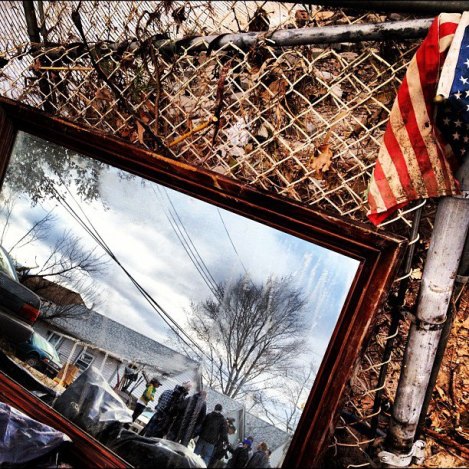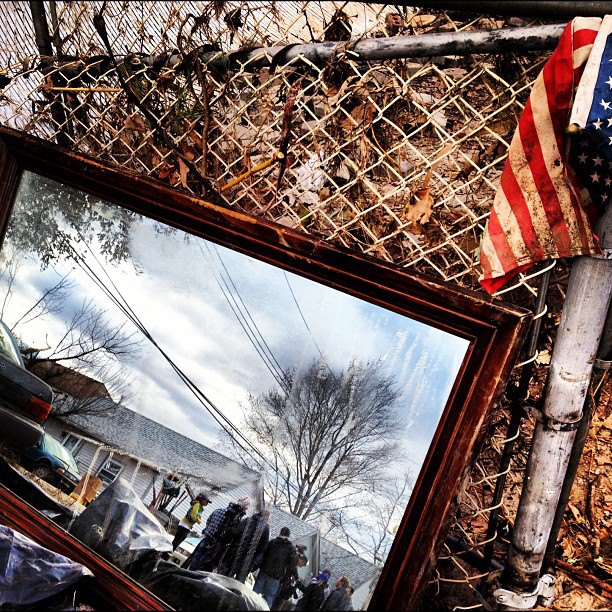Near my home on the Upper West Side of Manhattan, there’s a row of cars double-parked, running about six blocks long. At the end of the line, there’s a gas station that finally has fuel in stock.

One week after landfall, Sandy lingers in New York, even in areas like mine that were relatively unaffected. On the fringes, the parts bordering the ocean, the effects are immediate and visceral. The Rockaways, the thin spit of land stretching southeast along the Atlantic, was ripped apart by the storm. Staten Island looks frayed, its southern and eastern edge in shambles while the middle of the island is relatively normal.
Over the weekend, The New York Times ran several articles outlining the challenge the city faces in rising sea levels.
In a story titled “Protecting the City, Before Next Time,” the Times looks at some of the myriad proposals for softening the effect of tidal surge — including abandoning places like the Rockaways.
If, as climate experts say, sea levels in the region have not only gradually increased, but are also likely to get higher as time goes by, then the question is: What is the way forward? Does the city continue to build ever-sturdier and ever-higher sea walls? Or does it accept the uncomfortable idea that parts of New York will occasionally flood and that the smarter method is to make the local infrastructure more elastic and better able to recover?
Among those actions already proposed are relatively minor alterations to the building code, to ban housing boilers and electrical systems in basements, and slightly more apocalyptic strategies, like one known as managed retreat, in which people would cede low-lying areas to the sea. While no one is calling for a mass and permanent exodus from the Rockaways, for instance, some experts, like Radley Horton, a climatologist at Columbia University, said that as parts of New York became more difficult — and costly — to protect, managed retreat needed at least to become “part of the public discussion.”
In “After Getting Back to Normal, Big Job Is Facing New Reality,” the paper puts the challenge bluntly: “Hurricane Sandy is now a gauge of the region’s new fragility. Climate change and extreme weather are presenting government — and the public — with some overwhelming choices.”
As we noted last week, New York has seen this problem coming, but failed to address it. In 2009, the American Society of Civil Engineers warned that the city needed to build protective systems against surge.
“Scientists and engineers were saying years before Katrina happened, ‘Hey, it’s going to happen, folks. Stop putting your head in the sand,’ ” said Malcolm Bowman, a professor of oceanography at the State University at Stony Brook …
“The same thing’s now happened here,” Professor Bowman said.
There is one way in which New York has responded quickly and overwhelmingly to Sandy: by volunteering and donating. Yesterday afternoon, I passed a massive moving truck being loaded with donations from scores of people lined up on the Upper West Side. Kids on one street corner were assailing passersby with cries of “Candy for Sandy!,” offering Halloween leftovers for sale with proceeds going to storm victims. The Occupy movement, largely dormant for months, has sprung to life in the Rockaways, organizing food preparation and donation distribution.
On Saturday, my wife and I went to Staten Island to help where we could. What we saw was heartening: a massive, informal relief effort, distribution centers on street corners every few blocks, people going door-to-door offering to help where they could. It was confusing and inefficient, but it was a huge outpouring — dwarfed only be the scale of the damage.
But it took us a while to get there. We couldn’t find any gas.

China ZiegenbeinDamage on Staten Island.




